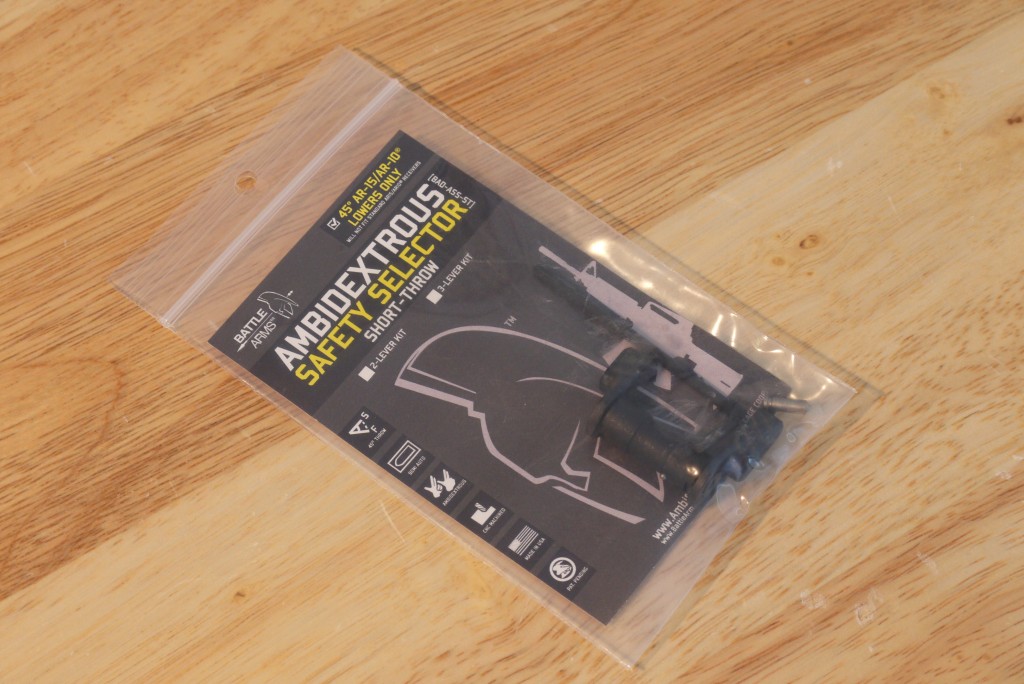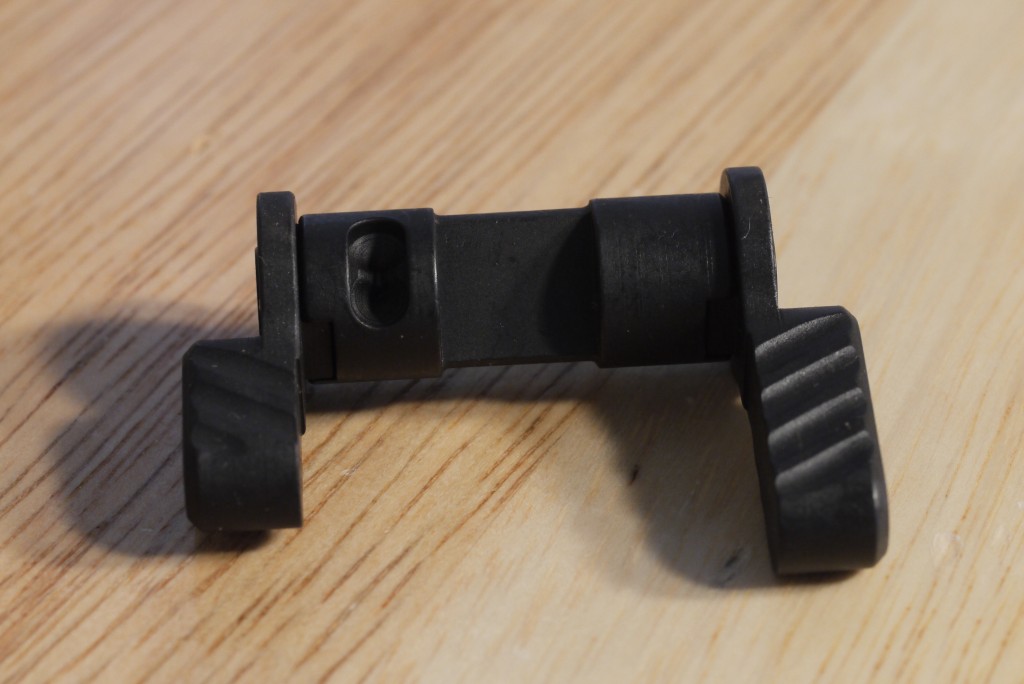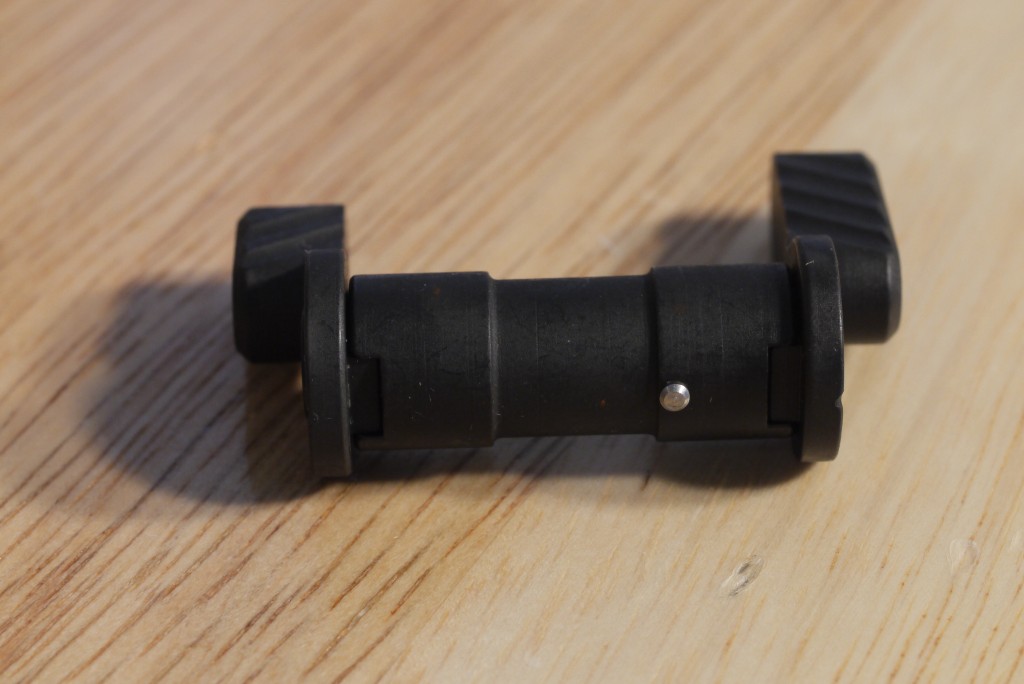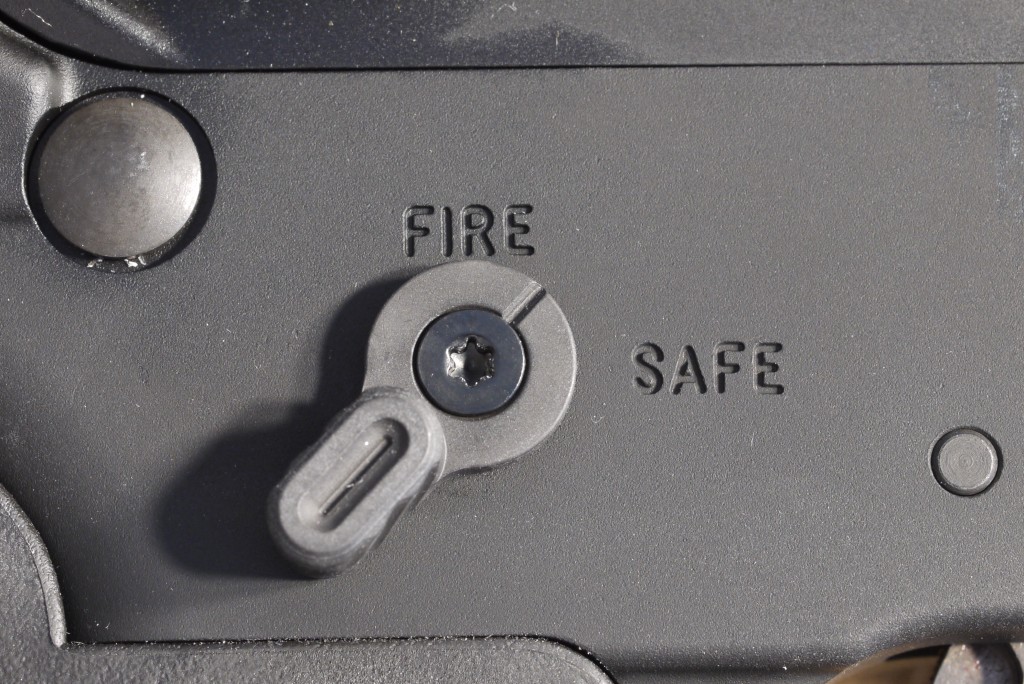Battle Arms development, the people who brought us the BAD-ASS safety, have been trying to improve on their design. They’ve engineered more comfortable levers, figured out how to make changing things around easy, and are working on making the safety feel a little stiffer to throw. But some things about the AR-15 safety just can’t be changed. Or can they?
The “ST” in the BAD-ASS-ST name stands for “short throw.” The idea behind this little bit of machined metal is that instead of having to rotate your safety the whole 90 degrees (like with a normal AR/M4/M16) you just need to flick it about halfway there. The theory goes that this will make it easier to manipulate. From the horse’s mouth:
The 90 degree selector (what we deem, and therefore call legacy selector) is something of a mystery to us. We are hard pressed to think of tangible benefits to a 90 degree throw, other than requiring the shooter to be deliberate of his selector action, as the throw is longer than necessary.
The long throw notwithstanding, it also introduced another problem: when the selector is set to Fire, the lever points straight down and creates interference with the trigger finger.
With our semi auto ambidextrous selectors, we came up with levers of various geometry, length and thickness to reduce the interference, but it is impossible to get around it altogether. This is a design constraint, as it is based on the legacy 90 degree throw selector.
There’s typically no problem switching the weapon from Safe to Fire, the problem has to do with the reverse (switching from Fire to Safe), it will require the shooter to shift his grips. With an ambidextrous selector, the awkward motion is mitigated by the shooter’s being able to use his trigger finger to manipulate the trigger side lever, but there is no denying the ergonomics of this arrangement are of dubious quality.
A similar theory is the reason behind the design of Heckler & Koch’s safety selectors. The thumb only needs to move a little bit, and it’s easier to move. For the AR-15 platform, all that needed to be done to make a 45 degree safety is drill the detent holes closer together.
This is only possible with a semi-auto AR-15 (right now), as the design of the mechanism that allows for select fire capability needs that 180 degree rotation in order to function. Which was the reason for the 90 degree rotation on the semi-auto version — they just copied the controls from the M16. Without the need for “Rock and Roll” capabilities the safety could be redesigned.
This posed a slight problem. On a normal AR-15 lower, the “SAFE” and “FIRE” markings are at the top and sides of the safety hole and line up perfectly with the indicator on the safety lever when thrown, just like on the “big boy” version. But with the 45 degree safety things don’t exactly line up the same way. The legal department didn’t like that, so they put this little stainless steel pin into every 45 degree safety. It protrudes just enough to keep the safety from being used in a “standard” AR-15 lower.
There are lowers designed to use a 45 degree safety that have a slot for that pin (and the safety markings in the right places), but the only one I know of is the AR15.com lower. For the rest of us about 5 minutes and a Dremmel removes the last barrier to slotting it into any lower we want. BAD has a little warning about doing that, though.
The pin is the only thing in the way of the 45 degree selector being usable in any standard receiver. For T&E, you will need to file the pin away, but in the review, if you disclose that you modified it to fit, please also put a note there stating that such modification will void the warranty.
Voiding warranties is what I’m all about, so that works for me.
It’s strange fiddling with a 45 degree safety. I keep expecting it to not let me drop the hammer when it’s “disengaged.” But after a few magazines it gets to be a little more familiar.
BAD recommends that this safety be used with the “short” levers, and the reason is immediately obvious. With a long lever, my thumb keeps knocking the safety lever on the left side of the gun. It’s kinda uncomfortable. Small levers make it better, but not quite as comfortable as the full length safety.
These guys were right when they said flicking the safety back on would be a breeze. Something about the angle of the lever and the way I was holding the gun made me keep accidentally flicking the safety back on. Annoying at the range, infuriating in a competition and potentially deadly in the field. It’s probably something that could be fixed with training, but as we all know when the shit hits the fan we tend to revert to what we know best.
Some people have been waiting their whole lives for this. A safety that might shave a few miliseconds of their time. For them, this safety is perfect. But for me, the ease of inadvertently engaging the safety and the required Dremmel put this solidly in the “gimmick” category. Just like flash hiders with the grooves cut in a spiral pattern to “mimic the rifling” or “Accu-Wedges,” they’re the firearms equivalent of fuel additives for cars. Sure, they might have a purpose and they seem logical on the surface, but for the average person you’re not going to notice a difference.
Can you flick the safety back on without moving your hand? Yes indeed. Is it faster to engage than the old safety? Yes it is. But it takes some practice to use and I think it’s a tad uncomfortable.
Then again, I’m not a fan of H&K’s safeties either.
Battle Arms Development Ambidextrous Safety Selector Short Throw (BAD-ASS-ST)
Specifications
Weapon: AR-15
Material: Steel
Levers: Choice of two levers
MSRP: $85
Ratings (Out of Five Stars)
All ratings are relative to other similar products. Overall rating is not mathematically derived from the constituent ratings.
Ergonomics: * * *
The 45 degree cant is fast, but it’s not specifically finger friendly.
Ease of Use: * * * * *
Wax on, wax off…
Overall Rating: * * *
It’s nifty, but I just don’t really like it all that much. I don’t really like any 45 degree safeties, to tell the truth. Judging it just by quality the BAD-ASS-ST is a five star piece, but in terms of function, ergonomics, usability and other factors I’m going to have to give it three stars.








Once something becomes the de-facto standard we all train or practice to, anything different can be too alien to adapt to. The ‘Dvorak’ computer keyboard layout is profoundly faster than the traditional QWERTY layout (which was actually designed to be slow) but it never caught on. Sometimes it’s more important to have A standard than to have The Best standard.
I’ve been rocking this ST lever for a while now. I love it. I found that it does take some getting used to if you’ve got the short levers (you’ve got to reach a bit further with your thumb than you do with a standard safety lever) and that I still revert back to using my thumb to put the firearm back on Safe even though it is faster (and probably safer) to do so with a flick of the trigger finger. Nothing that can’t be overcome.
Comments are closed.